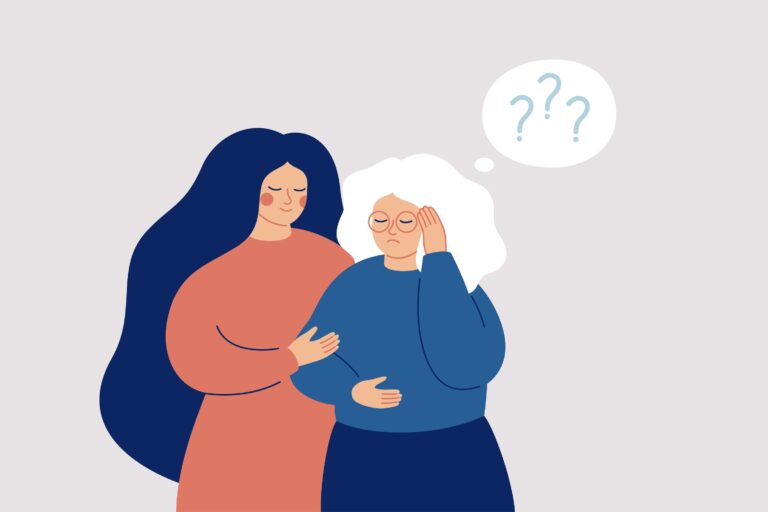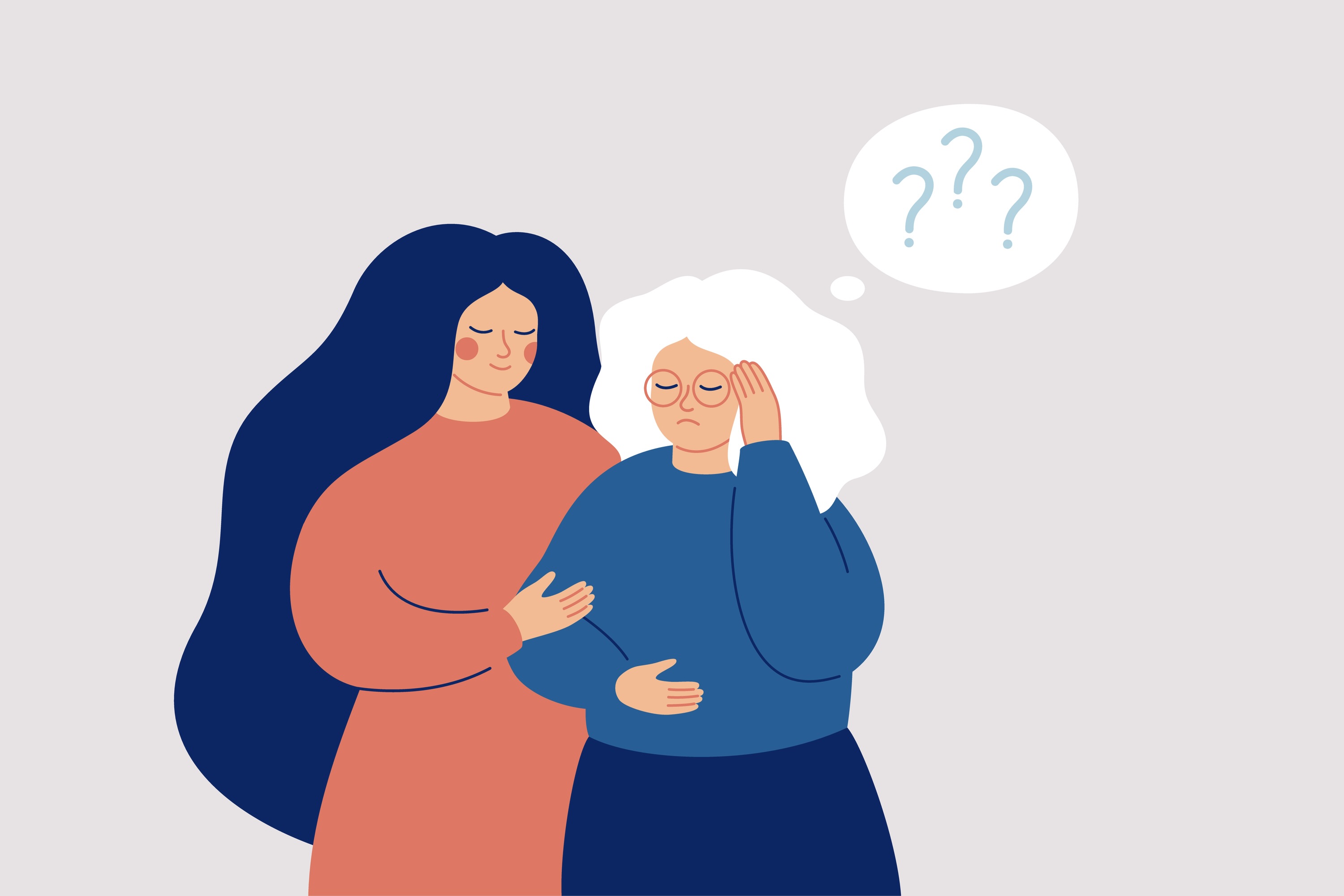
[ad_1]

The first signs of the disease are so subtle that they can be tricky to catch. Sometimes, they come in the form of rude remarks or an occasional out-of-character comment. Sometimes, they appear as a struggle to stay organized or an increase in impulsive spending. And sometimes, wrong words and slurred sentences are the initial indications.
Though these symptoms can seem small, frontotemporal dementia worsens with time, transforming the way that people act and communicate. Destroying the brain from within, the disorder accounts for around 10 to 20 percent of all dementia cases worldwide, yet its signs and symptoms aren’t widely understood.
What Is Frontotemporal Dementia?
Defined by a persistent, progressive decline in intellectual functioning — whether it’s remembering, reasoning, or some other form of thinking — dementia interferes with a person’s ability to perform their day-to-day activities. And though there are a variety of different types of dementia, one of those types is frontotemporal dementia (FTD), which shrinks the brain’s frontal and temporal lobes.
The two foremost portions of the brain, the frontal lobe and the two temporal lobes help people plan, pay attention, multitask and make choices. These areas also play an important part in shaping a person’s personality, as well as their abilities to process and produce language and to move around, meaning that their atrophy can cause a wide range of consequences.
Sometimes FTD starts in the frontal lobe, and sometimes FTD starts in the temporal lobes, causing changes to behavior on the one hand and to communication on the other. The symptoms start when deposits of abnormal proteins develop in one of these areas, disrupting brain activity. And though these deposits spread as the disorder progresses, the initial symptoms of FTD do differ, depending on which lobe or lobes are targeted first.
Read More: The 4 Main Types of Dementia
Frontotemporal Dementia Symptoms
When the atrophy starts in the frontal lobe, individuals typically see the initial shifts in their behavior. Classified as behavioral variant frontotemporal dementia (bvFTD), the specific symptoms of these cases can include:
-
Problems with planning and prioritizing tasks
-
Loss of sympathy and social skills
-
Loss of inhibition (impulsivity)
-
Loss of interest (apathy)
-
Compulsive behavior, such as counting, clapping, and tapping
Alternatively, when the atrophy starts in the temporal lobes (and particularly the dominant temporal lobe that deals with producing and processing language), individuals tend to see changes in communication first and foremost. Classified as primary progressive aphasia (PPA), these cases can include symptoms such as:
-
Issues with using and understanding written and spoken language
-
Having trouble naming things
-
Having hesitant speech
-
Having slurred speech
-
Making mistakes with word choice and sentence construction
Though the vast majority of frontotemporal dementia cases involve changes in a person’s behavior and communication in the initial stages of the disorder, some patients with FTD develop difficulties with their movement and their mobility as an initial symptom, instead. These issues include twitches, tremors, spasms and troubles with walking and swallowing.
Of course, it follows that movement and mobility-centered cases occur when the portions of the frontal lobe and the two temporal lobes that control movement are the first to atrophy, though these cases can sometimes cause behavior and communication symptoms as well, when more and more of the brain is affected by the disorder.
Read More: How to Talk to Someone With Dementia
Frontotemporal Dementia Stages
Though the pace of the disease differs from patient to patient, frontotemporal dementia tends to progress through three separate stages, involving a steady widening and worsening of symptoms.
1. Early-Stage FTD
The first of these three stages — the early stage of frontotemporal dementia — is filled with subtle symptoms, including small adjustments and alterations in behavior, speech, and movement.
While those with the behavioral variant of the disorder may become a bit more moody and behave a bit more abruptly during this stage, those with the communication variant of the disease may start to stumble over their sentences. But whatever the specific symptoms, the signs of the disorder tend to stay in the background, sometimes being seen as a sign of aging rather than dementia.
2. Middle-Stage FTD
In the middle stage of frontotemporal dementia, past symptoms start to intensify and new symptoms start to appear. For instance, while individuals with behavior-centered FTD tend to see symptoms of communication-centered FTD in this stage (and vice versa), individuals who struggle with their movement and mobility may develop difficulties with their behavior and communication.
At this point, the effects of the disorder are apparent and diagnosable, particularly to outside observers, though some patients do struggle to identify the signs of their dementia on their own.
3. Late-Stage FTD
The late stage of frontotemporal dementia involves increasing issues with an individual’s behavior, communication, and mobility, with additional declines in their memory. In fact, the loss of memories is not typical of FTD until the final stages of the disorder, with patients only then struggling to recollect and recognize their family, friends, and their favorite places.
As this final stage progresses, important day-to-day tasks (including swallowing, grooming, and going to the bathroom) become increasingly difficult. And since there is no cure for the disorder in this stage or in any of the previous stages, the disorder ultimately becomes fatal.
Frontotemporal Dementia Life Expectancy
Following the first appearance of FTD symptoms, the average individual lives for about six to eight years. After that time, they typically die from complications connected to their disease, whether it be from a fall or an infection of aspiration pneumonia, in which food or fluid becomes trapped in the lungs. Factors such as overall health and age of onset can influence the life expectancy of frontotemporal dementia.
Approximately 60 percent of those with FTD develop dementia between the ages of 45 and 60, making the disorder particularly prevalent among younger adults. And though studies suggest that there are around 50,000 to 60,000 individuals in the United States with some form of frontotemporal dementia, specialists suspect that the disease is underdiagnosed due to its initial similarities to depression and bipolar, among other disorders.
Read More: Understanding How Dementia Causes Death
Frontotemporal Dementia Treatment
Specialists say that there are no proven methods for preventing or slowing the progression of frontotemporal dementia, though they also stress that their continued investigations into the disease could contribute to future treatments.
For now, they add that there are several methods for managing FTD, including medications (for behavior symptoms), speech therapy (for communication symptoms), and physical therapy (for maintaining mobility).
Read More: How to Treat Dementia No Matter What Age You Are
[ad_2]